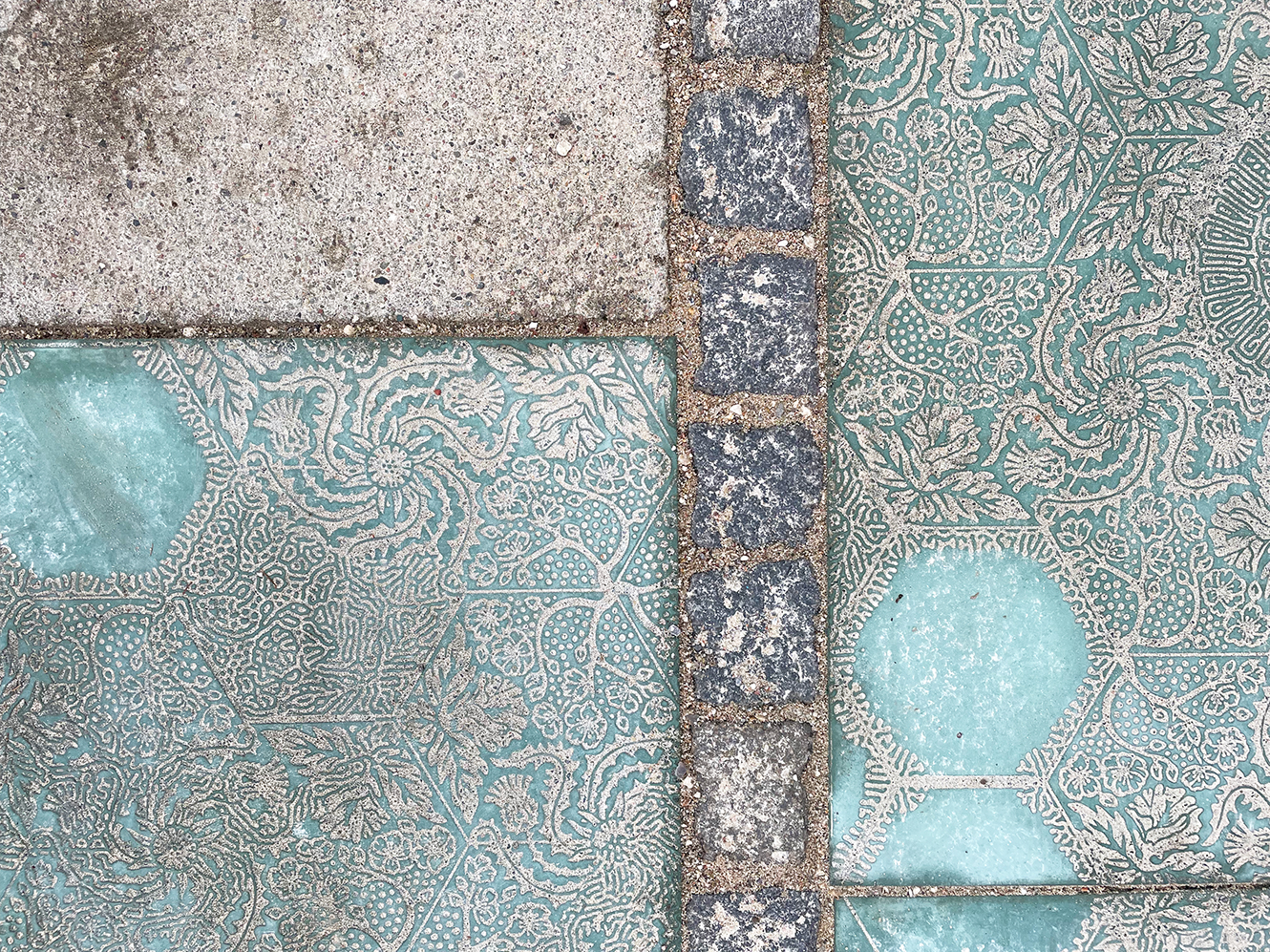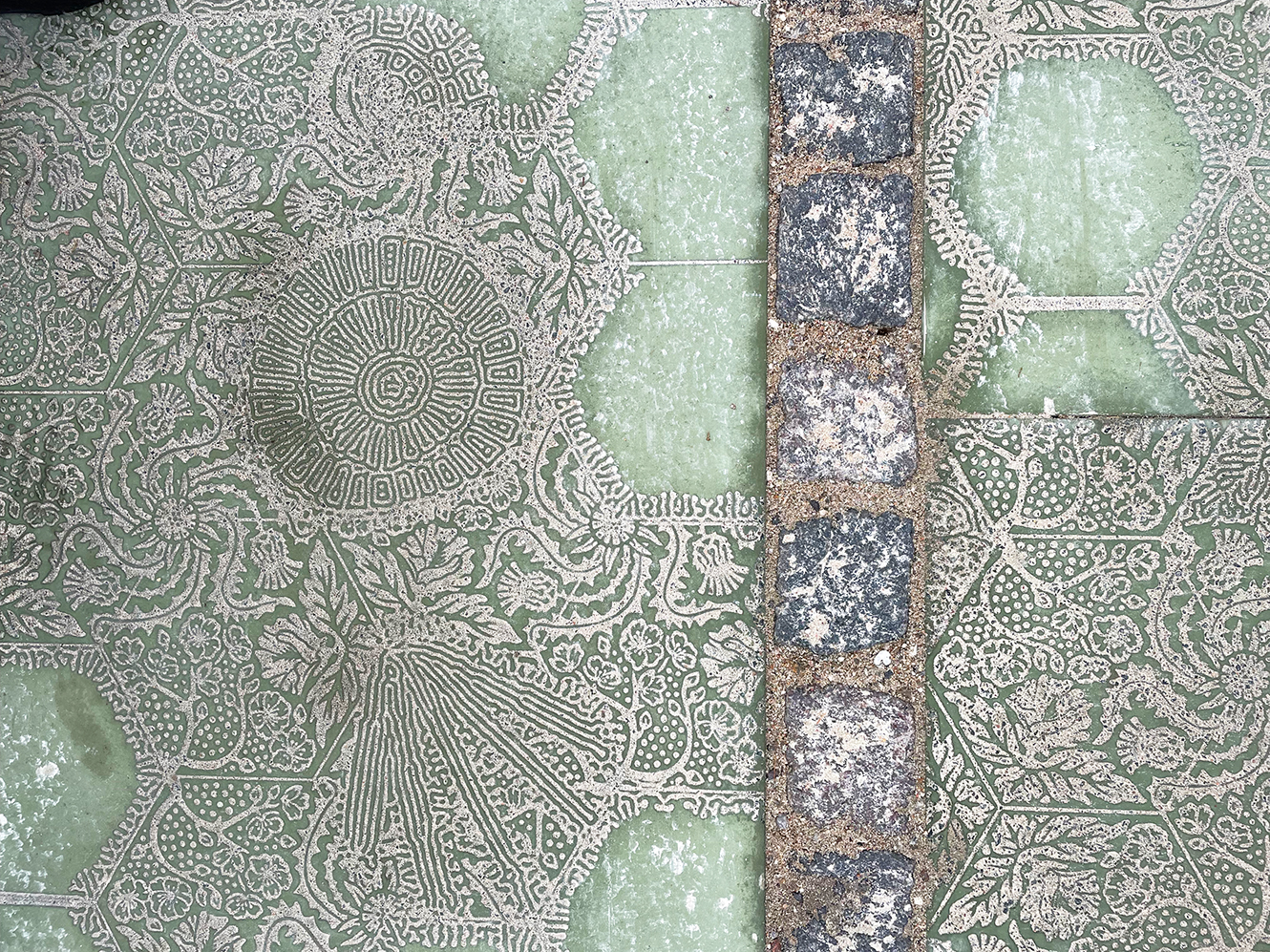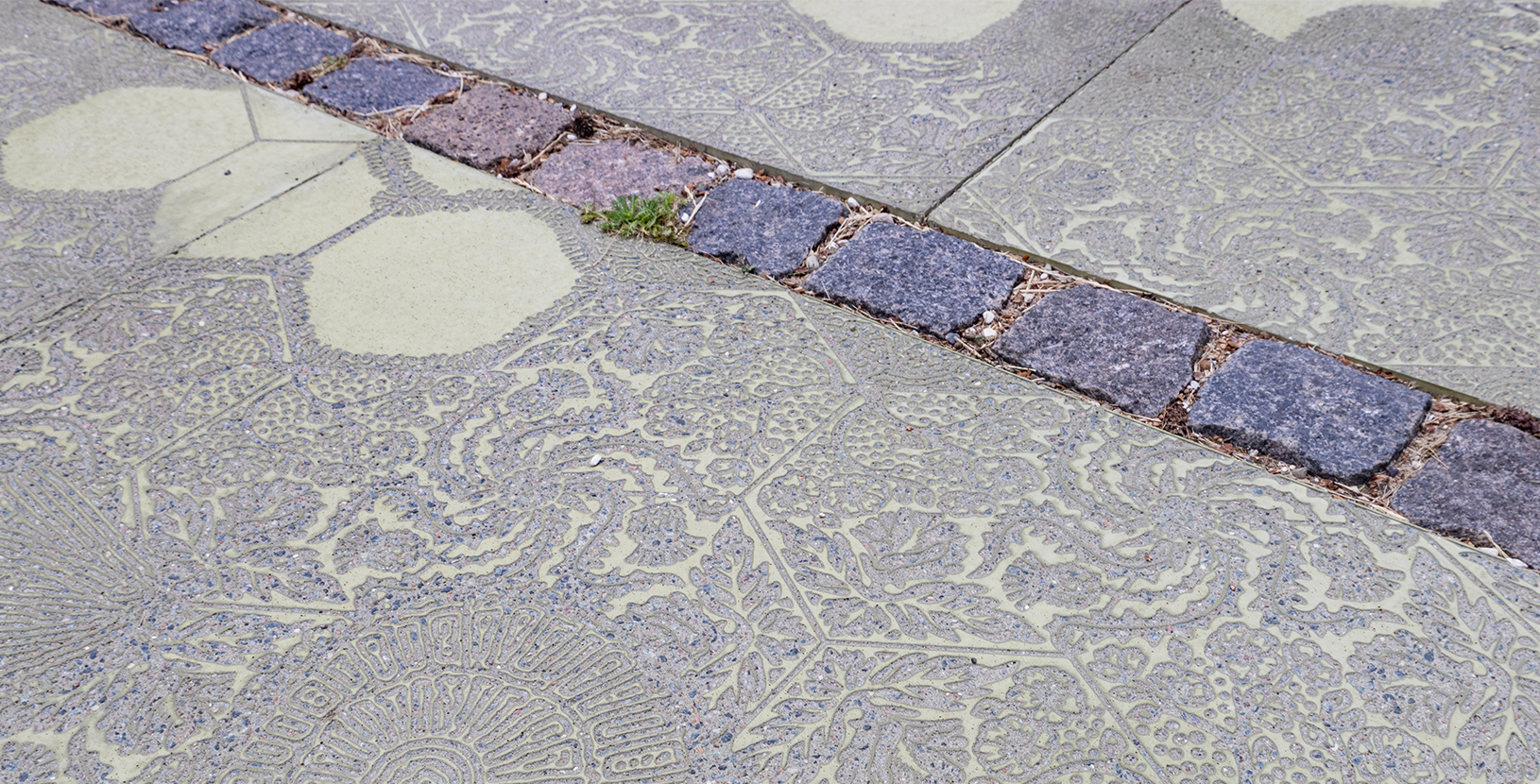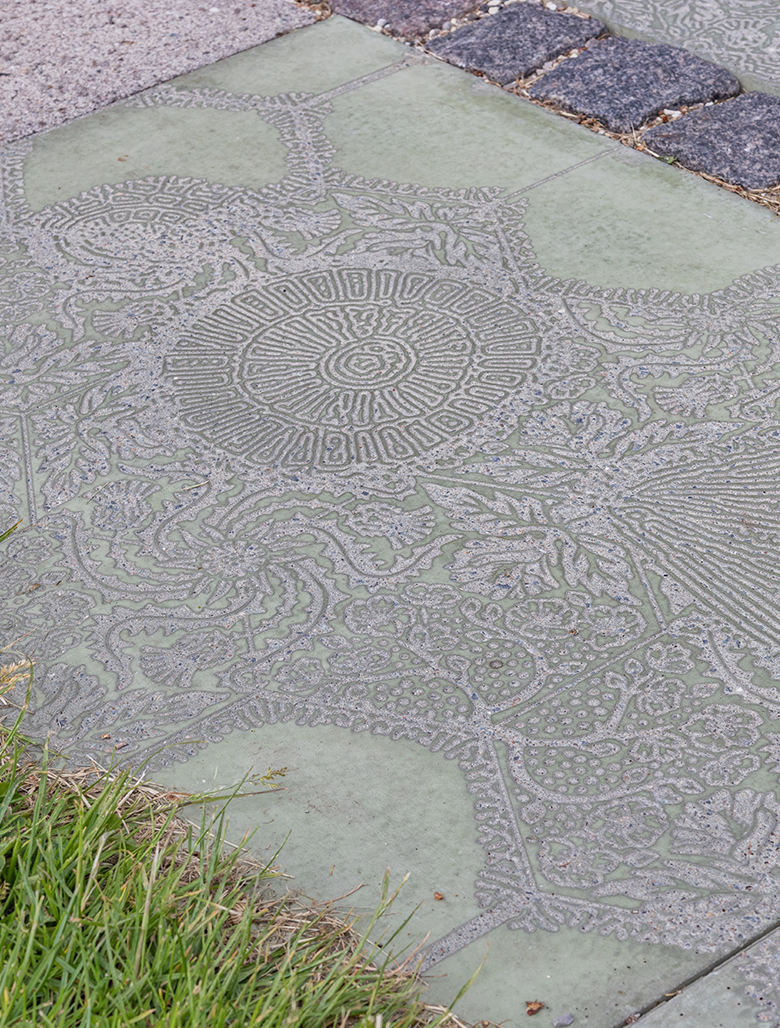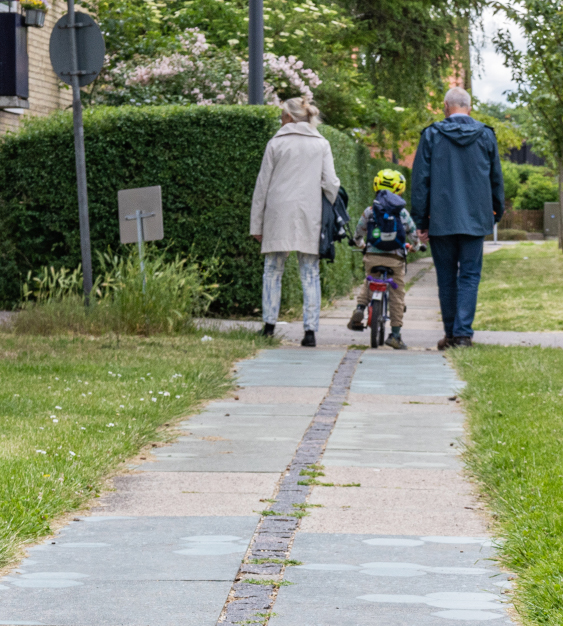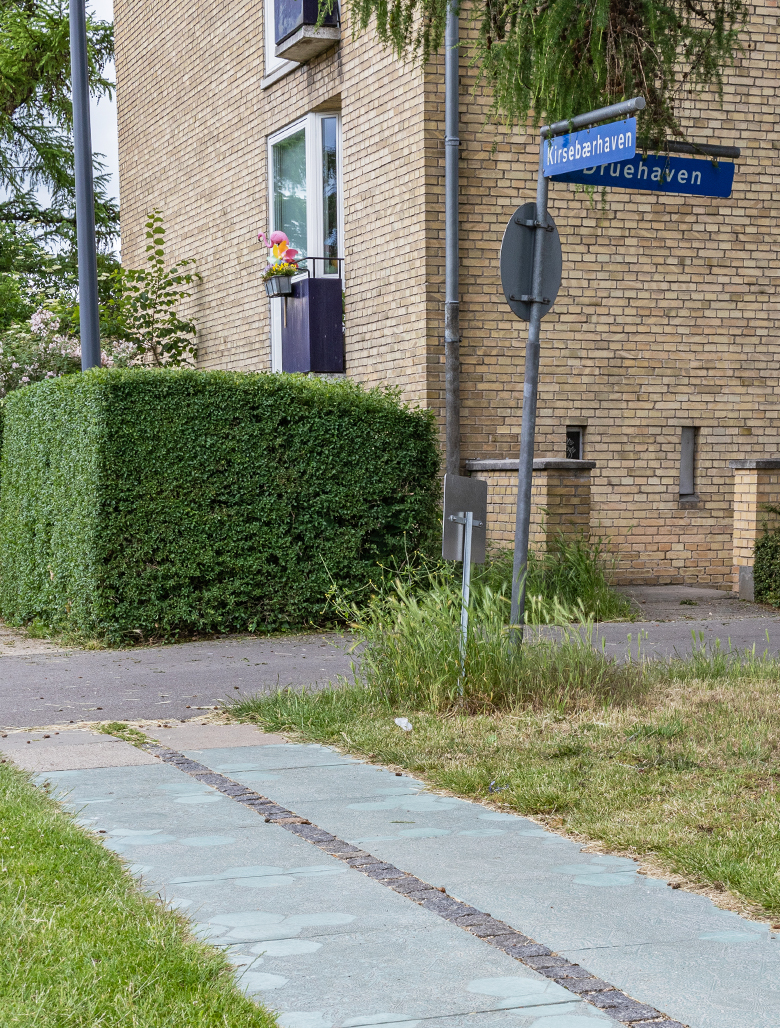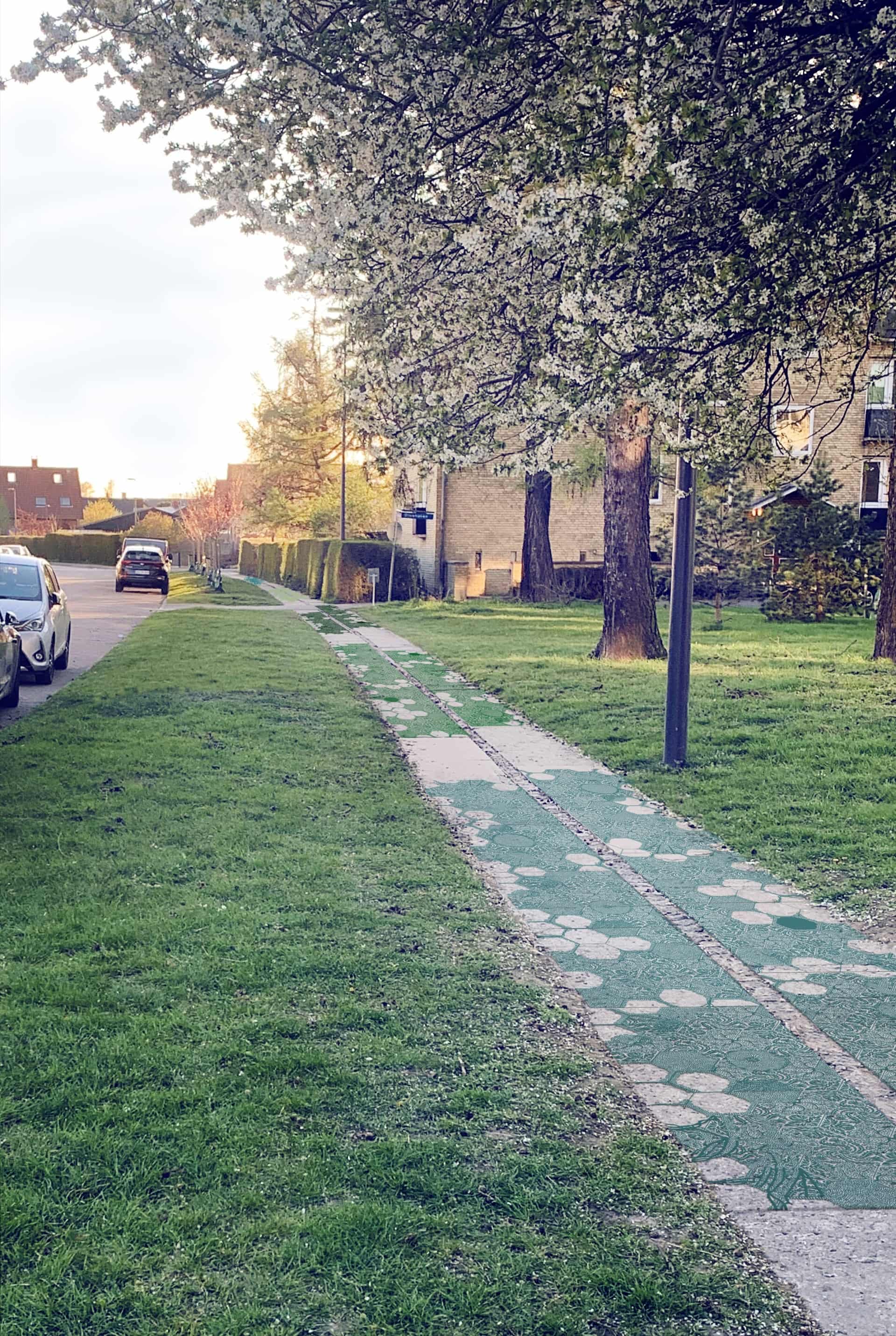A Commissioned Work at Folehaven: Kirsebærbæltet
Mille Kalsmose has created a new building-integrated and socially sustainable art piece called Kirsebærbæltet. This work is developed in close dialogue with the local community, It consists of 50 green Copenhagen tiles with a pattern of hexagonal flower silhouettes spreading across the pavement in the Folehave district, Valby.
The vividly colored Syrian rose evokes distant horizons. It was chosen by mother and daughter, Mira and Isra. The flower brings back memories of their grandparents’ garden in their homeland, Syria, while its stems are inspired by Danish roadside plants—symbolizing the family's new roots in the neighborhood.
The thistle is both a familiar intruder in our gardens and a natural part of Denmark’s wild flora. With its stubborn nature, it boldly pushes through on dry and barren ground where few plants survive, revealing its beautiful purple flower heads atop thorny, prickly stems.
"Folehaven is a former farming district, built on open fields and later transformed into a working-class neighborhood. That’s why ordinary flowers fit in so well here—they are resilient and stand tall, especially when united" — Lis, resident in Kirsebærhaven.
The hexagonal planting pattern has been developed further to mimic a Turing pattern: a biological system in which patterns emerge through a series of activations and deactivations of proteins and acids in cells, creating a random mix of stripes, waves, spirals, hexagons, and more.
In this way, Kirsebærbæltet gains a new biological life, generated through a computer-coded Turing pattern in which entirely new species and varieties emerge as an organic mix of existing ones—just as Kirsebærhaven and its surroundings evolve when new people arrive and expand the organic structure of the community.
This new biological life, which breaks down existing structures to build new ones, may serve as a model for the transformation humanity is facing—one in which dichotomies dissolve in order to grasp that multiple, equally valid truths exist beyond the familiar. These truths remind us of the interconnectedness of all things—between human beings and between humans and nature.
Finally, Kalsmose's work contributes to the municipality's vision of reducing its CO2 consumption. The pavement decoration not only challenges the traditional appearance of the Copenhagen tile but also its function. All the tiles in the artwork are treated to absorb CO2 and, combined with 50 newly planted cherry trees, contribute to Folehave's green profile.
